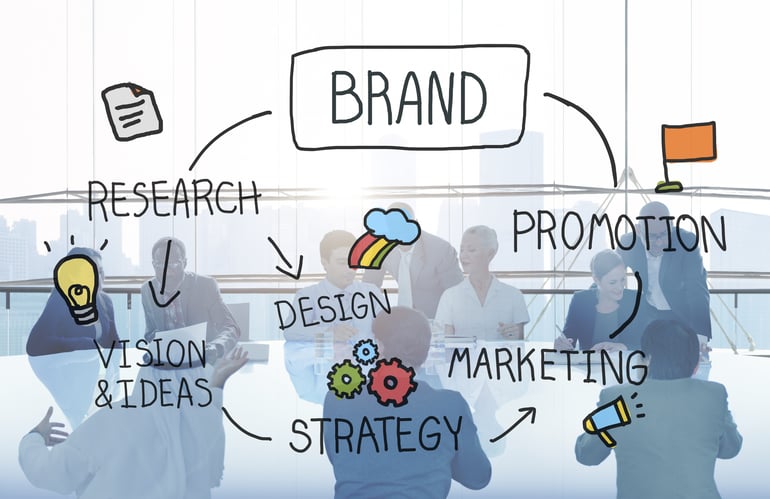In our business, one of the most misunderstood terms we encounter is branding. Often, people confuse the meaning with "logomark" or brand messaging. In truth, your branding is far more critical to your success than that.
Simply put, your “brand” is what your customer thinks of when he or she hears your brand name. It’s everything the public thinks it knows about your offering—both factual (e.g. It comes in a robin’s-egg-blue box), and emotional (e.g. It’s romantic). Your brand is the emotion/experience someone feels when they think of your company. Your brand exists only in someone’s mind.
For these reasons, branding is one of the most important aspects of any business, large or small, retail or B2B. An effective brand strategy gives you a major edge over your competition and can make or break a business. So how exactly do you begin? Do I need to hire an expert? Branding is expensive, right?
To that very last point, it doesn't have to be. As it turns out, there are some pretty creative ways to brand your business without a ton of cash. And while it does require an investment of time, the ROI won't go unnoticed – in some cases, it can actually help you save money.

5 Steps to Branding on a Budget:
1) Know your personas
Do you know who your typical customers are? Do you know where they shop? How much money they make in a year? How many kids they have? As a whole, all these things may not seem important to you compared to the product you sell, but they are important characteristics for your customers and how they make their purchasing decisions.
Having a well-defined buyer persona can help you build a better marketing plan in the long run. Personas are vital to success because they drive design decisions by taking common user needs and bringing them to the forefront of planning before design has actually started. Knowing persona characteristics can be invaluable to you team as you move forward and develop your marketing strategy. Take the time and do the research. Many marketers skip this step and in turn, their messaging becomes cloudy and diluted.
2) Develop an identity and a voice
Great, you’ve identified your buyer personas, now your brand can start to take shape. The next step is to create your brand identity – the characteristics that identity with your brand – and its voice, which is the tone you use in any copy or communication. The personality of your brand is determined, in large part, by the words you use and the sentences you write. So get started creating an authentic voice for your brand.
Figuring that out follows a process not unlike the one that’s used to determine your personas. If your brand was a person, how would you describe its personality to someone? At this point, also talk about how you would describe your competitors as people, too. Is one of your competitors trying too hard? Is another ditzy and unorganized? How do your brand’s personality traits make you different?
3) Have a consistent social media presence
So, now you know who your personas are, how to speak to them and what to say. But where do they hang out?
Since you might have a clear picture of the different pieces of your audience, it’s important to figure out where they’re spending the most time, especially on social media. you must now find them and go speak to them.
We recommend checking out the latest Pew Research Center’s Demographics of Social Media Usage, which profiles the users of five major social media platforms -- Facebook, Pinterest, Instagram, LinkedIn, and Twitter. Here you will see that 79% of internet users (68% of all U.S. adults) use Facebook! Pay attention to the data. Stats like this are helpful for guiding your social spend and resources.
Make sure that you establish your online presence and more imprtantly, maintain it. How many times have you gone to a brand’s Facebook Page only to find that nothing has been posted in the past three months? Chances are, it didn't have a positive impact on your perception.
That can be avoided by diligently planning and scheduling social media posts. Luckily, there are many services that can help you post and plan your posts. Check our Hootsuite, Percolate, and Buffer.
4) Blog it up
If you're wondering if blogging is really necessary, here is an article that emphasizes the role bloggins plays in business development. It’s a core part of the Hubspot Inbound Methodology, especially the “attract” stage – the one that converts strangers into visitors to your website.

In fact, blogging might be the most fundamental step of inbound marketing. It helps you reach qualified customers, like your personas, by creating the informative content that matches the information they’re searching for. That’s why it’s so important to make it relevant to this audience and make sure your content is optimized for the web. (New to SEO? Check out Moz's Beginner's Guide to SEO for comprehensive information you need to get on the road to professional quality Search Engine Optimization, or SEO).
Since your personas are already searching for information that you’re able to provide, what better way to attract them to your business. Content will also serve as material to populate your social media networks, and we’ve already covered what a crucial part that plays in branding on a budget.
5) Make customer service a priority
Whether you’re serving customers or clients, the goal is to create a delightful, sharable experience. And when the client or customer experience is a priority, it shouldn’t cost you much for them to talk about it. Ask them for a good review, or post online. Make them happy and they will be your best brand ambassadors.
It’s time to stop thinking of delight as a responsibility for only customer service. Why? Because every single interaction a user has with you, your co-workers, your website, and your content feeds into their overall experience – and overall impression of your organization as a whole. The better that experience is, the happier your customers are, and the more likely they are to stick around and tell their friends about the great experience your brand provides.
The goal in providing and accumulating these positive interactions throughout a customer’s lifecycle will help you stand out from your competitors and raise your rankings in the mind of consumers. Creating a brand experience whose goal is both pre- and post-sale delight can make a big impact on your organization’s bottom line and serve as a hefty competitive advantage: happy customers stick around longer than those who have a neutral or negative experience.
GET OUT THERE AND BRAND YOUR HEART OUT!
Building a brand might seem like a huge undertaking, especially when resources are limited. But there is hope and plenty of economical ways to not only get started, but to continue the momentum you start with these efforts.
And please, have fun with the process. Of course, there has to be a degree of strategy and logic involved – we recommend doing your homework and using online sources to help guide your way. Just remember, it’s a creative exercise, so keep that in mind if you get bogged down in technicalities.
What were some of the first ways you started branding your business on a budget? Let us know in the comments.





Let Us Know What You Thought about this Post.
Put your Comment Below.